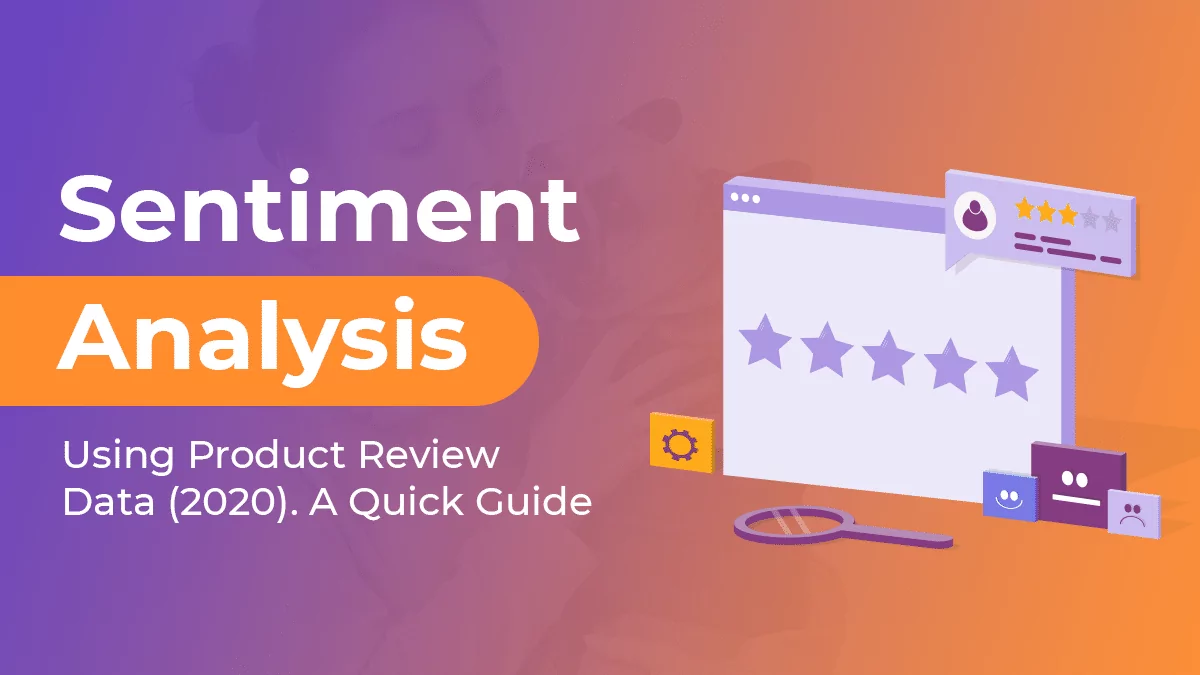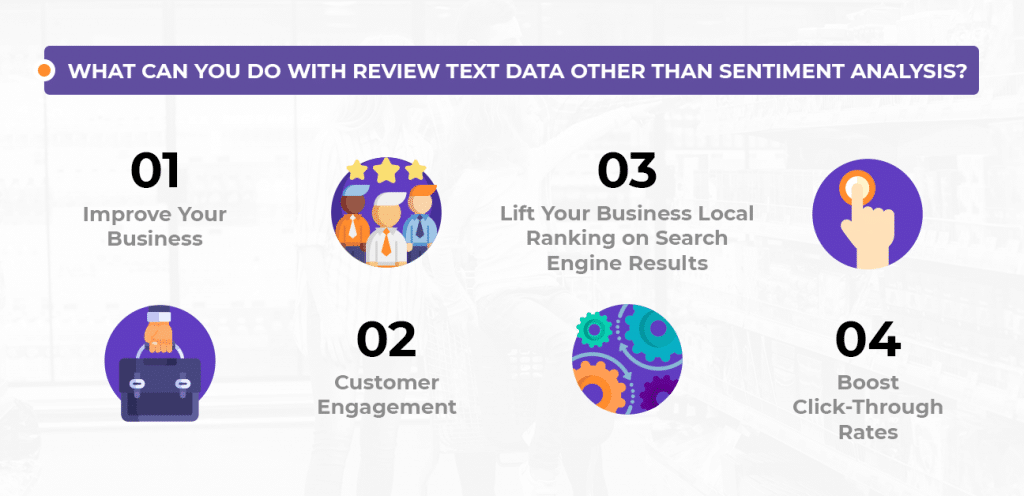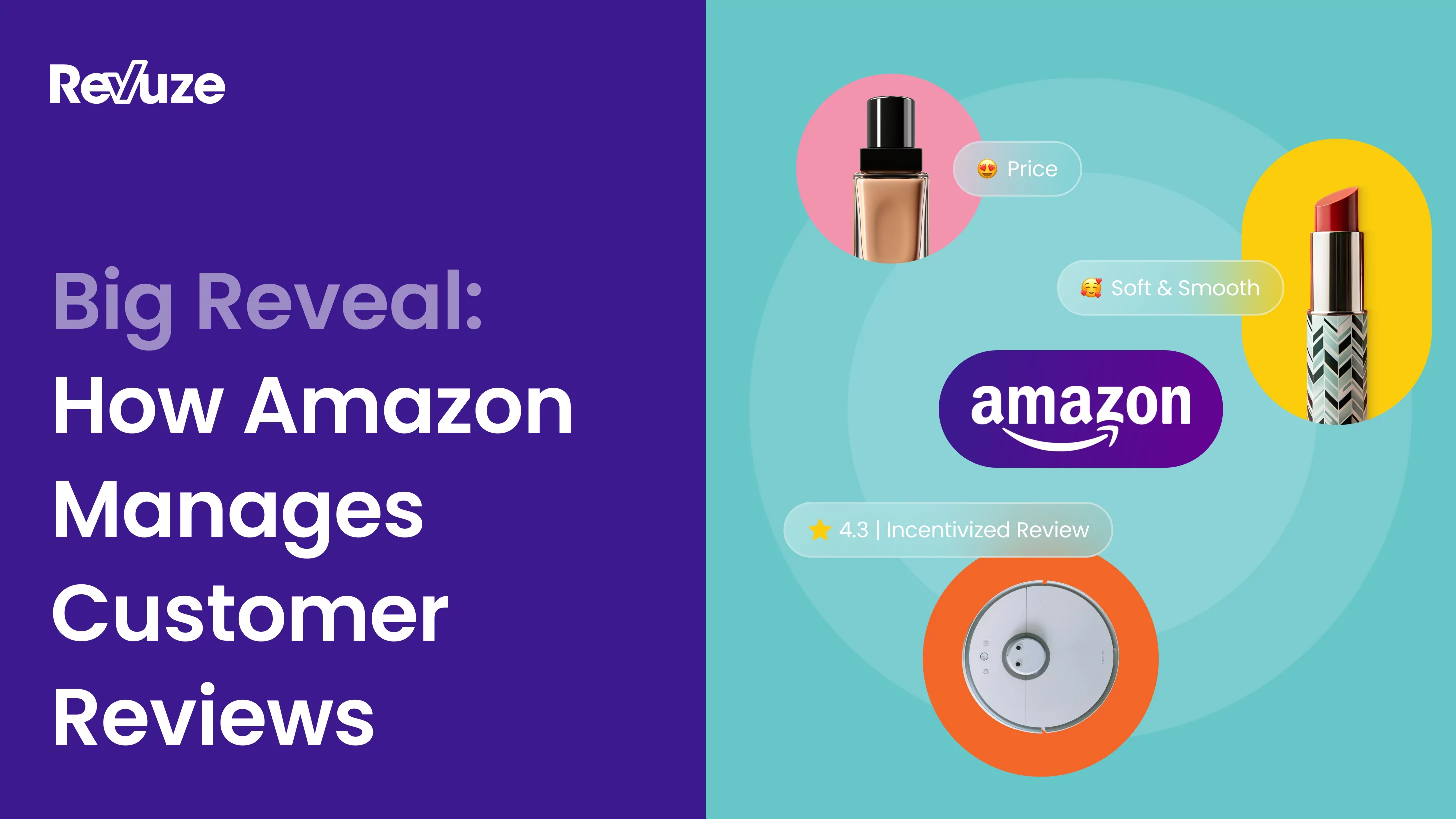
Sentiment analysis refers to the use of Natural Language Processing and computational linguistics to study emotions in subjective information.
Previously, we discussed the importance of sentiment analysis. In this article, we will learn how to use sentiment analysis using product review data.
Let us find out the ways.
Sentiment Analysis of Online Product Reviews
Every brand is concerned about what customers say about their products or services. For this, they try to find out the online reviews of their products. They do it in two ways:
1- Review Sites
There are specific sites like Capterra, G2Crowd, Trustpilot, and similar ones that collect public reviews about different products.
There are eCommerce stores like Amazon and eBay where people leave reviews about their experience with the product. Companies often refer to these sites to evaluate customer feedback.
However, the reviews present on these sites are unstructured and not easy to understand. Companies have to devote hours of manual labor to bring the data into a structured format and analyze the data.
2- Social Media
There are social media platforms like Facebook, Twitter, LinkedIn, Instagram, Pinterest, and Reddit where people share their thoughts freely.
Then, there are other social platforms like forums and Q&A sites where people engage in conversation on specific topics.
However, collecting data about a particular product from the discussions happening around social streams is not easy.
Firstly, the authenticity of the opinion cannot be guaranteed as people can freely post their content. For instance, the posts can be spam posted using fake accounts.
Secondly, the expression of the opinion is not always clear. Sometimes, it is difficult to say if an opinion is positive, negative, or neutral.
Sentiment Analysis of Customer Product Reviews Using Machine Learning
The data that you collect via review sites and social channels are all in an unstructured format, which is difficult to analyze. This is where Natural Language Processing and machine learning is so useful.
Machine learning tools are trained to learn the difference between context, sarcasm, and misapplied words.
Several techniques and complex algorithms such as Linear Regression, Naive Bayes, and Support Vector Machines (SVM) are used to detect user sentiments.
Using these techniques, the tool can separate the reviews into tags – positive, negative, or neutral. This way, you can obtain the insights within minutes.
For example, review insights platforms like Revuze automate your product review analysis by understanding the voice of the customer using qualitative eCommerce opinion insights.
When you have insights that describe consumer needs, you can use them to:
- Find out the things your customers like and dislike about your product.
- Compare your product reviews with your competitors.
- Obtain real-time product insights anytime.
An excellent example of using product review data would be how one of our Asian customers identified that packaging experience was a major star rating driver for his snacks – “consumers offered feedback that is intrinsic to the product such as the propensity for crips to break and become crumbs before consumption.” This led the company to change its packaging resulting in an increase of 0.53% in its star rating, which translated into more sales and fewer bad reviews on marketplaces.
Sentiment Analysis for Product Rating
Customers rate a product depending on the level of satisfaction they have with it. Ideally, products are rated on a scale of 1-5. With 1 being the lowest rating and 5 being the highest. Depending on the rating, users leave a review of the product.
There are eCommerce stores like Amazon, eBay, Overstock, Zappos, and others that display ratings of individual products. Then, there are app stores like Google Play and Apple App store that display the ratings of apps along with user comments.
The ratings of a product are reflected in the comments. In the advanced sentiment analysis for the product rating system, comments are analyzed to detect the hidden sentiments.
Sentiment analysis using machine learning takes the help of a database comprising sentiment-based words that include both positive and negative keywords.
The words used in the user comments section is compared to the words contained in the database and an evaluation is made. By comparing with the keywords in the database, the system specifies whether the product is good, bad, or worst.
However, sentiment analysis uses computational linguistics that goes beyond the mere detection of words in a sentence. It matches sentiments to entities and also understands sarcasm to accurately recognize the emotional tone behind a sentence.
Product Reviews API
Many social media sites release their application programming interfaces (APIs), considering the need for data collection and analysis.
Twitter is one such example, that released three different versions of APIs for researchers and developers – the REST API, the Search API, and the Streaming API.
The REST API allows developers to gather status data and user information. The Search API enables developers to query Twitter content. The Streaming API can gather Twitter content in real-time.
An additional benefit of these APIs is that the developers can use them to develop their own applications. This way, sentiment analysis becomes easier with the easy integration of massive social data.
Sentiment Analysis of Amazon Product Reviews
People trust reviews. Amazon customers make sure to check online reviews of a product before they hit the buy button. A high number of reviews suggest that the product is purchased by a large number of buyers while lots of positive reviews indicate that the product is of high quality.
More than 80% of Amazon product buyers trust online reviews in the same manner as word of mouth recommendations. Businesses should not ignore the power of analyzing product reviews before launching a new product in the market or to improve the experience of the current product.
Imagine finding out the most popular product under a category. One way is to scan all the product reviews listed under that category manually which is both time taking and expensive. The other way is to polarize a review on a particular category to understand the popularity of the product in the world. This is made possible with the help of sentiment analysis.
Sentiment analysis uses high-level programming languages such as Python to create sophisticated programs for data acquisition, processing, feature extraction, supervised learning, and result in classification.
What Can You Do With Review Text Data Other Than Sentiment Analysis?
Review text data are useful in many other ways to benefit your business. Here is how you can utilize this data.
1- Improve Your Business
Customer feedback can be both positive and negative. While positive feedback can be used for product promotion, negative feedback can be used to improve your product.
There are some negative reviews genuinely asking for your attention. Such reviews uncover systematic problems related to your business, process, or employees that might have gone unnoticed. You can pick such reviews, evaluate, and try to fix them.
2- Customer Engagement
The impact of the business-customer relationship is substantial, irrespective of the type of business. When you win the trust of your customer, you build a long-term relationship.
Engaging with the customers helps you to strengthen your relationship. But to engage with them, you need a way and reviews are the best ways to build a relationship with your customer.
You can establish an emotional connection and influence your audience by engaging with them. Try to catch every opportunity to connect with your audience. Answer to the people’s query, reply to the comments, and assure them that you care for them.
3- Lift Your Business Local Ranking on Search Engine Results
Word of mouth is a very old and powerful marketing strategy. Nowadays, consumers turn to online reviews before making a purchase decision. Google uses the same data to provide its users with the most relevant result.
It uses many tools and algorithms to evaluate reviews of the brands related to the keyword entered. Google filters out the local businesses with bad reviews or lower ratings and displays only the best brand, products, or services in the user’s locality.
So, there is a possibility that your website will rank higher in the Google Local 3-Pack and organic local search results if you have lots of positive reviews.
4- Boost Click-Through Rates
The primary aim of any business is to get users to click on their business website displayed in the search results. As discussed earlier, consumers are attracted to businesses with ratings and reviews.
Therefore, Google also displays the ratings of the businesses in its search result. So, you can increase the possibility of the searcher to click on your website by displaying positive reviews in the search results.

Why is Review Rating Prediction As A Text Mining Problem Not As Popular As Sentiment Analysis?
As already discussed, review rating predictions are based on the database of keywords. These keywords are indicators of whether the review is negative or positive.
However, it is unable to catch the expression hidden in the comment like context, sarcasm, and misapplied words.
Take this comment as an example:
“Very easy to use product. Yeah right. Maybe a rocket scientist can help us.”
The comment’s first part looks positive. But the entire comment is sarcastic and negative. Clearly, review rating predictions cannot be trusted completely.
Conversely, sentiment analysis uses machine learning tools which are programmed to read beyond mere definitions. It can detect the emotions in the text and tag them accordingly.
Conclusion
Sentiment analysis is an on-going process to understand what consumers think about your products or brand. Maximum possible product reviews are collected from different sources such as review sites, social media platforms, app stores, and eCommerce stores to gather user sentiment data. Sophisticated machine learning algorithms are used to convert unstructured data into structured data. Review analysis tools like Revuze can help to acquire faster insights without human interaction.
With the increasing market competition, sentiment analysis has become the need of the time. Even established brands are actively using this technique to improve the consumer experience. No matter if you have a new product or a popular one, you must adopt sentiment analysis in the ways mentioned above to constantly improve the user experience and stay ahead of the competitors.
 All
Articles
All
Articles Email
Analytics
Email
Analytics








 Agencies
Insights
Agencies
Insights